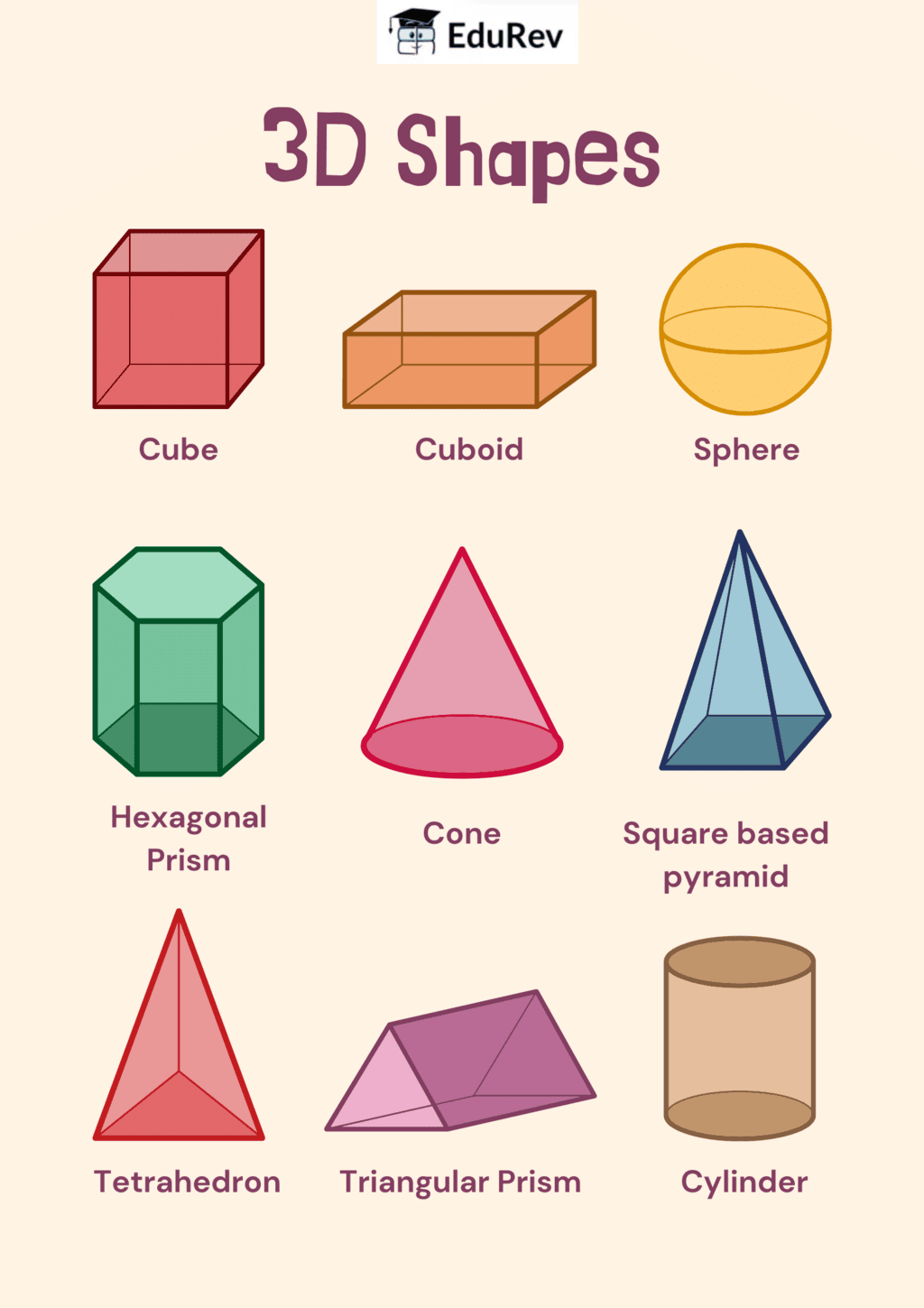Class 7 Exam > Class 7 Notes > Year 7 Mathematics IGCSE (Cambridge) > Poster: 3D Shapes
Poster: 3D Shapes | Year 7 Mathematics IGCSE (Cambridge) - Class 7 PDF Download

The document Poster: 3D Shapes | Year 7 Mathematics IGCSE (Cambridge) - Class 7 is a part of the Class 7 Course Year 7 Mathematics IGCSE (Cambridge).
All you need of Class 7 at this link: Class 7
|
28 videos|76 docs|22 tests
|
FAQs on Poster: 3D Shapes - Year 7 Mathematics IGCSE (Cambridge) - Class 7
| 1. What are the basic types of 3D shapes? |  |
Ans. The basic types of 3D shapes include cubes, spheres, cylinders, cones, and pyramids. Each shape has distinct properties: a cube has six equal square faces, a sphere is perfectly round with no edges, a cylinder has two circular bases and a curved surface, a cone has a circular base and a pointed top, and a pyramid has a polygonal base and triangular faces that meet at a point.
| 2. How do you calculate the volume of 3D shapes? |  |
Ans. The volume of 3D shapes is calculated using specific formulas. For a cube, the volume is found by cubing the length of one side (V = side³). For a sphere, the volume is calculated using the formula V = (4/3)πr³, where r is the radius. The volume of a cylinder is found using V = πr²h, where r is the radius and h is the height. For a cone, the volume is V = (1/3)πr²h, and for a pyramid, it is V = (1/3)Bh, where B is the area of the base and h is the height.
| 3. What are the properties of 3D shapes? |  |
Ans. The properties of 3D shapes include faces, edges, and vertices. Faces are the flat surfaces that make up the shape, edges are the line segments where two faces meet, and vertices are the points where edges meet. For example, a cube has 6 faces, 12 edges, and 8 vertices, while a sphere has no edges or vertices and only one curved surface.
| 4. How do 3D shapes differ from 2D shapes? |  |
Ans. 3D shapes differ from 2D shapes primarily in that 3D shapes have depth, width, and height, whereas 2D shapes only have width and height. This means 3D shapes occupy space and can be viewed from different angles, while 2D shapes are flat and can only be viewed from one side. Examples of 2D shapes include squares and circles, whereas cubes and spheres are examples of 3D shapes.
| 5. In what real-life applications are 3D shapes used? |  |
Ans. 3D shapes are used in various real-life applications such as architecture, manufacturing, and computer graphics. In architecture, buildings are designed using 3D models to visualize the structure. In manufacturing, products are often shaped in 3D for design and production processes. In computer graphics, 3D shapes are utilized for animations and video game design, providing a more immersive experience for users.
Related Searches




















